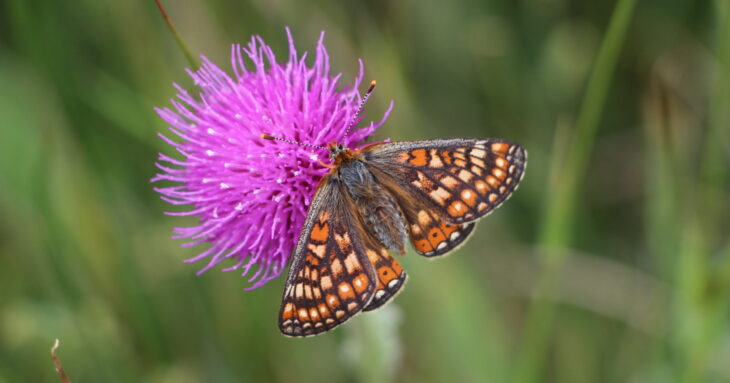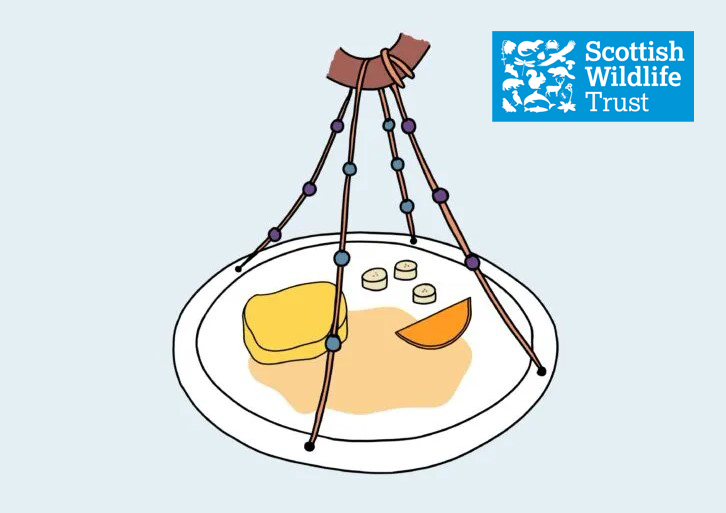As pollinators, butterflies play an important role in our ecosystem. They spread pollen around as they pick nectar up from flowers when they feed, pollinating other plants and spreading seeds. Butterflies are also very useful for conservation because they are indicator species. They react very quickly to their environment, so changes in butterfly numbers can indicate something is happening before other signs are clear.
Sadly, like many animals and insects in our ecosystem, butterflies are in decline due to threats including climate change. This puts the plants that rely on them for pollination and the animals that rely on them for food at risk as well! To help support butterfly populations, you can plant flowers that they like. Butterfly feeders can also help to give them a sugary boost. Watching butterflies eat at feeders can be a great opportunity to observe the different species that visit.
Butterfly feeders don’t need to be fancy; you could just soak a sponge in the sugar and water solution or hang ripe oranges cut in half from a tree. Below are instructions for a butterfly feeder that you can customise and get crafty with!

Extra: Below, you will find our butterfly spotter sheet which you can use to help identify your visitors! You can also find a couple downloadable activity guides showing some other ways of making a butterfly feeder…
What you will need:
- A paper plate or a plastic lid
- Hole puncher
- Some string
- Sponge
- Sugar and water
- Scissors
- Decorations, such as beads or flowers

How to make a butterfly feeder
- To make your own butterfly nectar using sugar and water, simply mix one part sugar with four parts warm water. Fruit, especially bananas, can also attract butterflies.
- To make the feeder, start by hole punching four holes evenly spaced around the edge of your plate.
- Next, cut four pieces of string the same length. Thread each string through the four different holes and tie them to the plate.
- You can decorate the butterfly feeder by threading decorations such as beads or flowers to the string. If you don’t have any decorations, you can still make a fancy hanging mechanism using macrame techniques.
- Tie the string together over the plate and make sure the string length is equal so that the plate hangs level.
- It’s best to hang the butterfly feeder in a shady spot, but make sure it’s safe from predators.
- Place your butterfly food of choice on the plate. If you have made your own butterfly nectar, soak a sponge in the mixture and put that on the plate.
- Now the butterfly feeder is set up, you just need to wait and see what butterflies are attracted to your garden!
